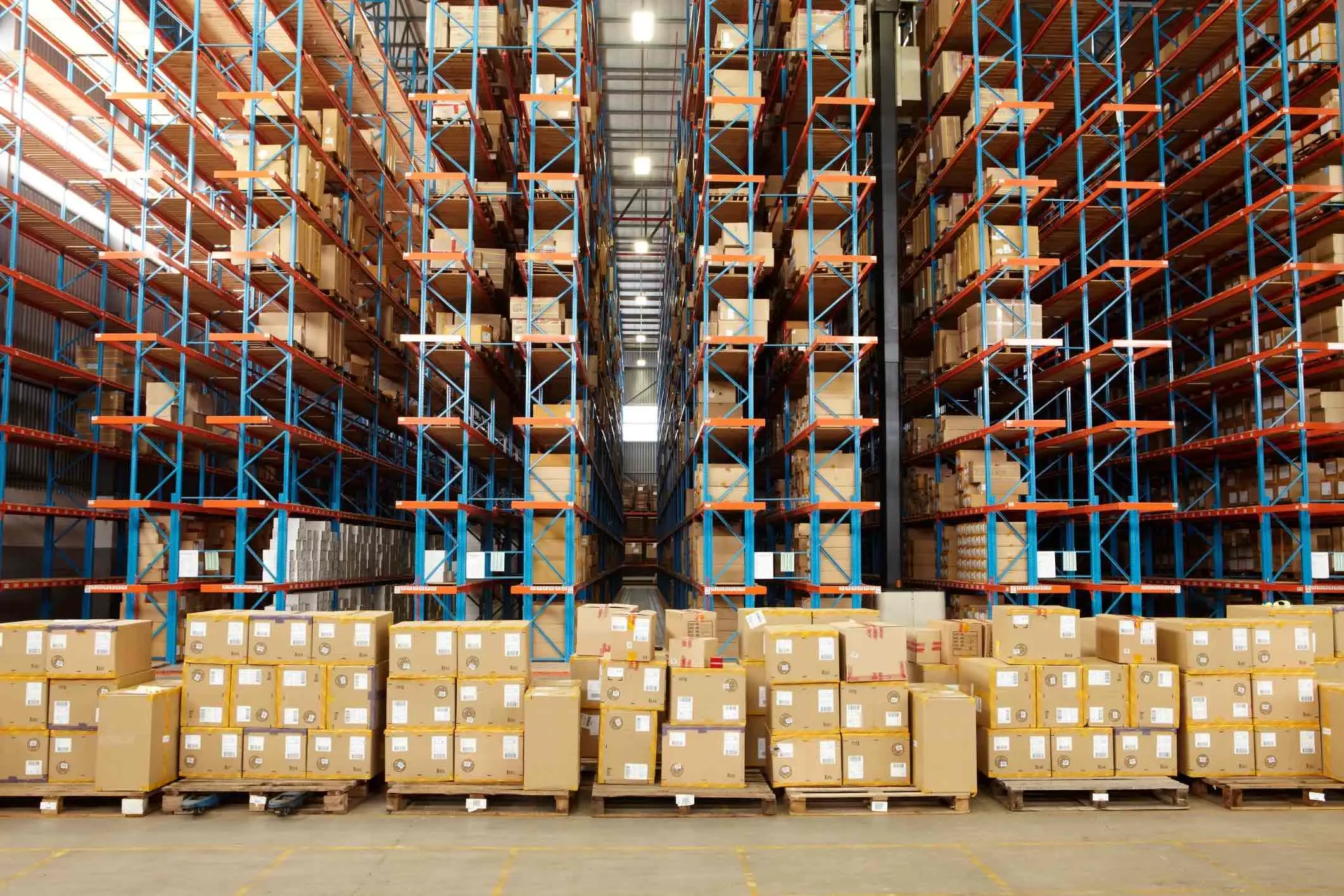Top Cybersecurity Trends Transforming Supply Chains in 2025

Digitalization has revolutionized logistics, but it has also exposed supply chains to unprecedented cybersecurity risks. Cyberattacks on logistics surged by 700% in 2020, with ransomware incidents targeting transport firms at alarming rates. By 2025, nearly half of global organizations may face software supply chain attacks. These threats demand robust cybersecurity in logistics to protect operations and data.
Key Takeaways
Using digital tools makes shipping faster but adds cyber risks. Keep systems safe with strong security steps.
Hackers could cost supply chains $60 billion by 2025. Save data often and teach workers to avoid these dangers.
Working with others is key to staying safe online. Share warnings and make a plan to handle cyber problems.
The Digital Transformation of Supply Chains

Benefits of Digitalization in Logistics
Digitalization has redefined how you manage logistics, offering unprecedented efficiency and transparency. Technologies like the Internet of Things (IoT) and sensor systems now gather real-time data, reshaping logistics operations. IoT sensors track the condition and location of goods, ensuring accurate monitoring throughout the supply chain. This capability reduces uncertainties and enhances decision-making.
You also benefit from real-time tracking of shipments and assets. GPS and RFID technologies provide visibility into the status and location of goods at every stage. This transparency improves accountability and allows you to respond quickly to delays or disruptions. Additionally, digital tools optimize inventory management by providing insights into stock levels and demand patterns.
Key technologies driving this transformation include:
IoT for real-time inventory and shipment data.
Artificial Intelligence (AI) for predictive analytics and automation.
Blockchain for secure and transparent transaction records.
Robotic Process Automation (RPA) for repetitive task automation.
Cloud Computing for seamless data sharing.
Digital Twins for virtual simulations and optimization.
These advancements not only streamline operations but also position your supply chain for long-term success.
Emerging Cybersecurity Threats in Supply Chains
As supply chains embrace digitalization, cybersecurity threats have become a pressing concern. Cybercriminals exploit vulnerabilities in interconnected systems, targeting both software and human elements. Common threats include supply chain attacks, malicious insider activity, and inadvertent errors.
One notable example is the MOVEit data breach, where attackers exploited a vulnerability in a widely used file transfer application. Such incidents highlight the risks of compromised software and stolen login credentials. Social engineering tactics further amplify these risks, tricking employees into revealing sensitive information.
The interconnected nature of logistics systems makes them particularly vulnerable. A single breach can disrupt operations, compromise sensitive data, and damage your reputation. To mitigate these risks, you must adopt robust cybersecurity measures and foster a culture of vigilance across your organization.
Top Cybersecurity Trends in 2025
Ransomware Evolution and Data Breaches
Ransomware attacks have become a significant threat to logistics. By 2025, these attacks are projected to cost supply chains $60 billion, up from $46 billion in 2023. This sharp increase highlights the growing financial impact of cybercrime. Attackers now use advanced methods to encrypt critical data, demanding hefty ransoms for its release. A single ransomware attack can halt operations, disrupt deliveries, and lead to a costly data breach.
You must also prepare for the ripple effects of these attacks. For example, compromised systems can expose sensitive customer information, damaging trust and reputation. The interconnected nature of logistics networks amplifies these risks. To combat ransomware, you need to invest in robust cybersecurity measures, including regular backups, employee training, and advanced threat detection tools.
Supply Chain Attacks and Third-Party Risks
Supply chain attacks exploit vulnerabilities in your network of vendors and partners. These attacks often target third-party software or services, bypassing your primary defenses. Common vulnerabilities include:
Physical threats, such as tampering with hardware components.
Software flaws, like weaknesses in vendor-installed applications.
Digital risks, such as compromised third-party libraries.
The SolarWinds Orion incident is a prime example of how attackers exploit these weaknesses. This breach revealed the dangers of trusting third-party vendors without proper oversight. Weak security practices in one partner can expose your entire logistics operation to cyber threats. To mitigate these risks, you must enforce strict security standards across all partners and regularly audit their practices.
AI and Machine Learning in Logistics Cybersecurity
AI and machine learning are transforming how you defend against cyber threats. These technologies monitor vast logistics networks, flagging unusual traffic patterns and suspicious activities. Predictive analytics identify weak spots in your supply chain, helping you address vulnerabilities before attackers exploit them.
Automation also plays a critical role. AI-driven tools reduce human error and speed up incident response. For instance, Maersk integrated AI after a major cyberattack in 2017, enabling proactive risk monitoring. Similarly, IBM Watson provides real-time threat detection, enhancing security for global supply chains. By adopting AI, you can stay ahead of cybercriminals who increasingly use automation to launch sophisticated attacks.
Tip: Incorporate AI-powered solutions into your logistics operations to enhance resilience and minimize risks.
Regulatory and Industry Responses to Cybersecurity Challenges
Key Regulatory Changes Impacting Logistics Cybersecurity
Governments worldwide are introducing new regulations to address cybersecurity risks in logistics. These regulations aim to protect critical infrastructure and ensure supply chain resilience. You must stay informed about these changes to remain compliant and safeguard your operations.
The following table highlights key regulatory frameworks shaping logistics cybersecurity in 2025:
Regulation | Key Requirements |
|---|---|
NIS2 Directive | - Implement incident reporting mechanisms |
DORA | - Ensure IT systems' integrity and availability |
KRITIS-Dachgesetz | - Conduct risk analyses |
These regulations emphasize proactive measures like risk assessments, incident reporting, and system stress testing. By adopting these practices, you can strengthen your defenses against cyber threats and minimize the risk of a data breach.
Governments and international organizations are also collaborating to create baseline cybersecurity standards. They coordinate efforts to combat cybercrime and incentivize investments in advanced security measures. These initiatives balance economic growth with public safety, ensuring a secure global supply chain.
Industry Collaboration and Best Practices for Cyber Resilience
Collaboration across industries has become essential for addressing cybersecurity challenges. You can learn from successful examples, such as the banking sector, where intelligence sharing has improved scam detection. Telecommunications companies have also partnered with banks to enhance fraud prevention. These partnerships demonstrate the power of collective action in mitigating cyber risks.
To improve your cyber defenses, consider adopting these best practices:
Train your employees to recognize and respond to cyber threats.
Share threat intelligence with other companies and experts.
Develop a clear incident response plan to minimize damage during attacks.
By implementing these strategies, you can build a resilient supply chain capable of withstanding evolving cyber threats. Partnerships and knowledge-sharing initiatives further enhance your ability to protect sensitive data and maintain operational continuity.
Building Cyber Resilience in Supply Chains with JUSDA

Proactive Cybersecurity Measures for Warehousing and Logistics
You can strengthen cyber resilience in your warehousing and logistics operations by adopting proactive measures. Start by securing your network infrastructure. Firewalls, encryption, and secure access protocols protect your IT systems from unauthorized access. Regular software updates and network monitoring tools ensure your systems remain secure against evolving threats.
Employee training plays a critical role in fostering a culture of security. Teach your staff to recognize phishing attempts and other cyber risks. Access control mechanisms, such as multi-factor authentication, prevent unauthorized entry into sensitive areas. Physical security measures, like surveillance systems, safeguard automation equipment from tampering.
Compliance with regulations like GDPR and HIPAA ensures data protection and builds trust with your partners. Regular penetration testing and security audits help identify vulnerabilities before attackers exploit them. Cloud computing solutions also enhance cyber resilience by centralizing management and supporting disaster recovery.
By implementing these measures, you can protect your transport and supply chain operations from disruptions and maintain operational continuity.
Importance of Stakeholder Collaboration in Cyber Defense
Collaboration with stakeholders strengthens your cyber resilience across the transport and supply chain. Sharing information with suppliers, partners, and cybersecurity experts helps you identify and address vulnerabilities. Industry alliances also promote the development of common security standards, ensuring a unified defense against cyber threats.
Active partnerships with cybersecurity specialists provide access to advanced technologies and expertise. For example, organizations like the CyberPeace Institute have successfully collaborated with companies and governments to address sector-specific threats. These partnerships demonstrate the value of collective action in mitigating risks.
You can enhance your defenses by participating in threat intelligence networks. These networks allow you to stay informed about emerging risks and adopt best practices. Regular communication with stakeholders ensures everyone remains aligned on security goals.
By fostering collaboration, you create a resilient supply chain capable of withstanding even the most sophisticated cyberattacks.

JUSDA Solutions
To provide you with professional solutions and quotations.
Addressing cybersecurity threats in logistics is essential to protect your operations and reputation. Ignoring these risks can lead to financial losses, operational disruptions, and regulatory penalties. Partnering with trusted providers like JUSDA strengthens your defenses. These collaborations give you access to advanced technologies and expertise, ensuring your supply chain remains secure against evolving threats.
By prioritizing cybersecurity in supply chain operations, you safeguard your business and build trust with partners and customers.
See Also
Top 5 Strategies For Achieving Supply Chain Cybersecurity
5 Key Trends Shaping Future Supply Chain Efficiency
Transformative Impact Of Cloud Solutions On Supply Chains
